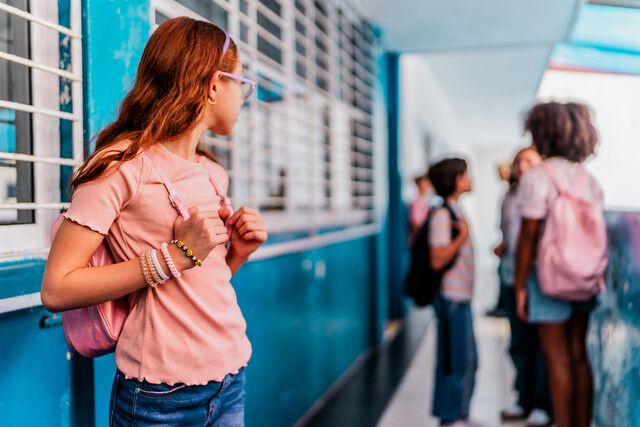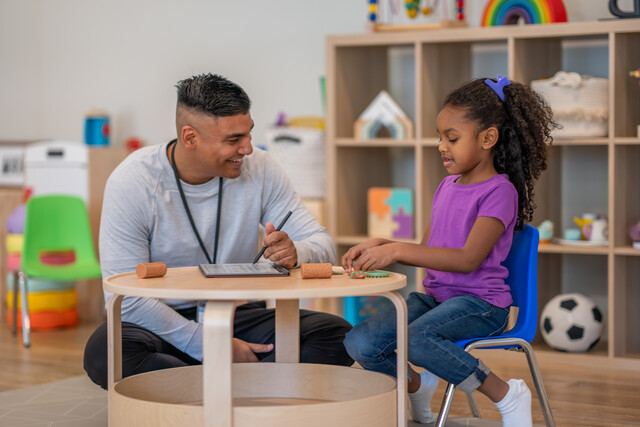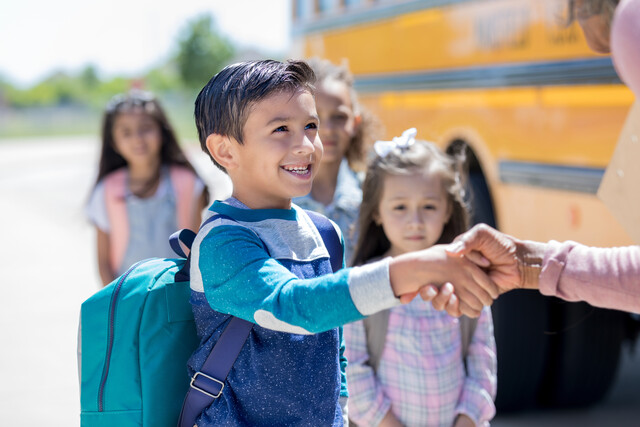Bullying Prevention Techniques: How Parents, Teachers, Communities Can Help
Many people can see that in their own community or school that bullying is a problem. Yet they may not know what they can do about it. They may see someone else's child being bullied and not want to get involved, because it's not their own child. But as a community we have already learned what the implications can be when we turn our heads and allow such behaviors to take place. Plus, if it were our own child that was being bullied, and another adult saw it taking place or was aware of it, we would want them to step in and help.
It's easy for people to say that "someone" should do something to begin a prevention program to their school, or to help raise awareness about bullying. But perhaps that someone never shows up. There's no reason why that someone can't be you! Each and every one of us has the ability to play an important role in helping to prevent and bring an end to bullying in our schools and community. It's just a matter of stepping up to the plate and saying you are not going to sit on the sidelines any longer waiting for "someone" to do something.
For those parents who would like to take a stand and begin raising awareness, focusing on prevention, and ending any current bullying, there are things they can do. For starters, it's helpful to see what type of bullying programs there are in your community. Find out if there are any current bullying organizations or task forces in place. If there are some, great, because much of the leg work in laying the foundation has been set. Your assistance will most surely be appreciated, and you can join the group and begin working toward common goals.
If there is not a bully prevention group or task force in your community, consider creating one. That "someone" who creates this much-needed organization can be you. Simply start the group and start working with your local police department and schools to raise awareness and open the discussion on bullying in the community. Running your own group is easier than it may seem. You can help raise bullying prevention awareness as simply as sending out press releases to your local newspaper, holding action meetings with local teen groups at area middle and high schools, or even running a localized blog that focuses on the issue in your community.
It's important for people in the community to work together to provide a safe environment for the middle and high school students in the area. This means that bully prevention and strategies need to be in place and they need to be put into action, not something that is merely put on paper. Here are some ways that people can work together with the schools to help prevent and address bullying:
- Have a set of policies regarding bullying. This means that schools should create a code of conduct that lays out what will be included as bullying, what is not allowed, and what the consequences of engaging in those behaviors will entail.
- The anti-bullying rules and expectations need to become part of the school's culture. All students need to be aware that the rules exist, and be aware of the consequences of violating them.
- There needs to be a reporting system put into place, so that students know how to go about reporting bullying and getting the help they need. Students need to know how to report bullying that they may see others engaging in as well, even if it is done on an anonymous basis. The reporting of such behaviors needs to be kept simple, private, and records on what is being reported need to be maintained.
- School staff and parents of students also need to be aware of the anti-bullying measures, as well as how to go about reporting it if they see it happening.
Most bullying prevention measures that groups focus on are related to the school atmosphere. However, as we have learned, a lot of bullying takes place outside of school. While prevention strategies may help to make students more aware of the problem, the consequences that the school has laid out will not be in effect if the bullying is not school-related. This leaves many parents and members of the community unsure where to turn, and what to do.
As a group, you can still work on bullying prevention and awareness in your community. Start by contacting your local police department to see if they have suggestions for you. They may have a crime prevention officer that you can work with. Working with that person, you may be able to hold community workshops on bullying prevention and learn where the problems are, so you can visit those communities and speak with the people in order to build a safety alliance.
People in the community can work with schools officials, peer advocacy groups, and their local law enforcement in an effort to raise awareness, help prevent bullying, and address bullying that takes place.
Believe it or not, groups also can work with the bullies themselves when they have been identified. Bullies are tweens and teens, too, and they are members of the community. They may lack good communication skills in getting what it is that they want; they come from homes that leave them feeling unhappy and uncertain, and they may not know a better way. When they are identified, you can step in, with the help of a mental health professional, and try and address the problem.
Working with the bully is a great way to help address the problem when bullying takes place. Most people have an attitude that they just want to condemn the bully and turn away from them. But they may also need help, just as much as the victim, and by providing them with the assistance and guidance they need you can help turn things around. This is good for them, as well as the community.
Remember, most people who bully do so because they want to exert some sort of power over their victim. Getting to the bottom of what that power is about -- whether because they want to move up the social status ladder, or because they are experiencing their own pain inside and are looking for an easy target to unload on -- can go a long way toward curbing the problem.
Support Groups
An important thing that communities can do is to create a support group for those who have been bullied, as well as for their families. Giving people the opportunity to come together to discuss their similar bullying issues will help strengthen them, as well as provide them with ideas on how to handle the situation. They may learn new ways to respond to a bully, or how to most effectively work with school administrators to address the issue.
Bullying Prevention Strategies
At this point most of us realize what a problem bullying is in our schools and communities. Many of us want to do something to help prevent bullying and end any bullying that is taking place. The problem is that most of us aren't sure how to get involved and what we can do to help with this matter. That's where this section comes into play. We will look at the importance of bullying prevention and what some programs around the nation are doing to help address the issue at our country's middle and high schools.
Why Prevention
It's always better to prevent something from happening than it is to try and stop it once it takes place. If we can prevent bullying from happening, we will avoid the problems associated with tweens and teens being bullied. If we recall from the earlier research, only a small percentage of these kids even tell their parents or an adult that they are being bullied. Most suffer in silence from it, not knowing the best way to get through the situation, or how to handle the stress from it. The more we can prevent it from happening in the first place, the more people will no longer suffer in silence.
Also, bullying prevention will help to keep problems from escalating. Prevention programs can help a school and community maintain a better quality of life, so that people have better attitudes; and it may help keep students in school. There are many good reasons to focus our attention on prevention.
Bullying prevention programs are not a completely new concept. There have been schools putting them into use for decades now. Because of this we can use their experiences to see what works, and what doesn't. Here are a few things to keep in mind regarding bullying prevention strategies:
- Attention. According to the American Psychological Association, boys between sixth and eighth grade are most often the ones impacted by bullying. They are more often the ones being bullied, as well as being the bully. As such, special attention needs to be placed on these middle school years. The more prevention awareness that can be done throughout these crucial years, the more students will have an easier time making it through the rest of the education without encountering the problem.
- Assessment. According to the U.S. Department of Health and Human Services, the first thing that should be done is an assessment of the school's bullying issue. Find out how often students are being bullied, where it's happening, what they are doing when it happens, and what school teachers and administers are doing about it. This can be done by observation and giving an anonymous poll, where students can share their feelings about the bullying climate at the school.
- Evaluate. Once you have the assessment you will begin to see what the pattern is that is taking place. Are students being bullied in the cafeteria? In the boys bathroom between 5th and 6thperiods? Is there a lot of bullying taking place on the bus? It's important to try and narrow down where on school grounds it is most often taking place, so those areas can receive extra attention.
- Carry out. Once you have the information needed, create a safety committee, or safety task force, at the school. Those on it should consist of both teachers and students and they should work together to assess the bullying situation ongoing, and make adjustments to the policies as needed. This task force should be responsible for creating a list of school rules that need to be followed regarding bullying, as well as a reporting system for when someone sees bullying taking place. Then it needs to be shared with the students, staff, and parents. Everyone needs to be on board in helping to address the bullying issue.
- Educate others. Everyone from teachers to parents need to know what to do if bullying takes place. Provide teachers with curriculum that is age appropriate and will help to address the topic. Send home information for parents, or hold an assembly for parents to discuss the issue; teach them about the issue and what they can do to help prevent and end it. Remember, most people want to help, yet they simply don't know what to do.
- Get input. Get ideas from a variety of people, including school administrators, guidance counselors, teachers, and students. Many of them will have good ideas of how to prevent and address bullying at the school and in the community.
It is believed that lack of parental involvement is the biggest problem that our schools face today. Many parents are busy working and feel they simply don't have the time to dedicate to getting involved. It's not that they don't want to, or they are trying to be mean, but we live in a fast-paced two-income society today that often keeps both parents busy until dinner time each day. However, the more we can get parents involved, the better off our school environment is going to be.
Work with the parents to not only keep them abreast of what is going on, including how to prevent bullying, the signs of bullying, and what to do, but also ways they can get involved. When more parents are involved in schools, it helps to create a safer learning environment for everyone. Having parents become more involved with their kids both in school and out is a win-win situation for everyone. Schools should encourage more parent volunteering, which will get more of them on campus, thus helping to create a safer environment.
There are many great ideas that can come out of a brainstorming session when it comes to finding ways to help with middle and high school bullying. Such things as putting on an anti-bullying assembly, creating a peer advocacy group, teen court, peer mediation, having students sign an anti-bullying petition and/or pledge, and curriculum-based approaches can be effective at addressing the situation. Having a safety committee that meets regularly and involves a mixture of teachers, students, and parents, can be another positive way to improve the school environment.


























